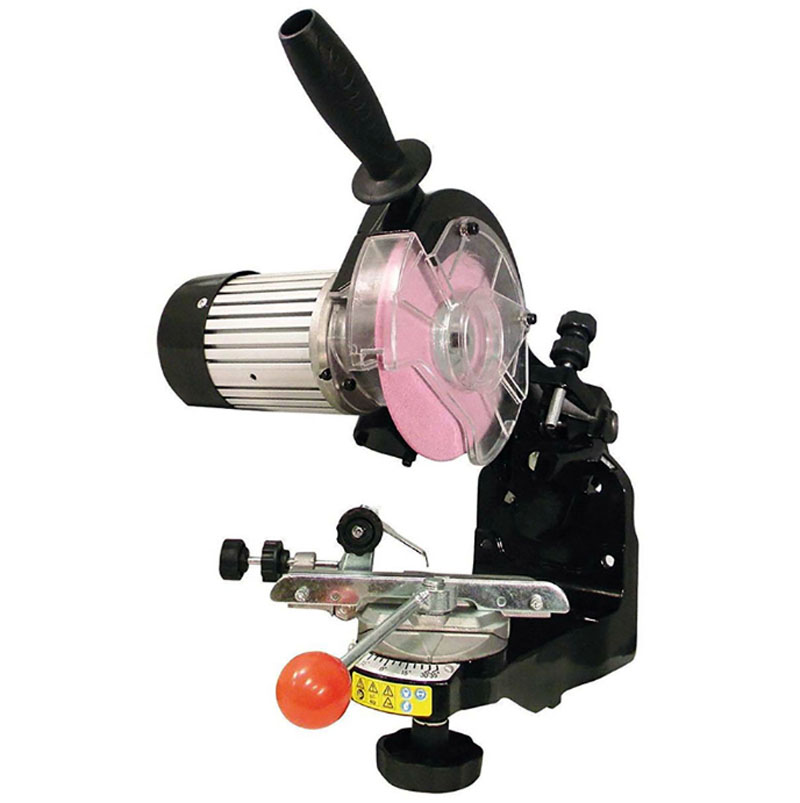
Keeping your chainsaw in top condition is essential to ensure it lasts for at least ten years or more. One of the most important maintenance tasks is sharpening the teeth, which ensures optimal performance and safety. If you're looking to sharpen your chainsaw, you'll need a reliable chainsaw sharpener—either manual or electric.
But do you know the differences between manual and electric chainsaw sharpeners? This guide will walk you through everything you need to know about chainsaw sharpeners and help you decide which one suits your needs best.
The Basics of Chainsaw Sharpening
Chainsaw teeth are designed to cut through wood effectively. They have a beveled edge that does the actual cutting and a flat side that helps guide the saw through the material. Over time, these teeth can become dull or damaged, making it harder to cut through wood efficiently. Regular sharpening is crucial for maintaining both the safety and performance of your chainsaw.
Here’s how you can sharpen your chainsaw teeth:
Step 1: Secure the Chain
Before starting, make sure the chain is firmly attached to the chainsaw. A loose chain can be dangerous and affect the sharpening process.
Step 2: Locate the Dull Teeth
Identify the teeth that need sharpening. These are usually the ones that appear worn or not as sharp as others.
Step 3: Set the Depth Gauge
The depth gauge is the small bump on each tooth. Use a depth gauge tool to file it down so it's level with the rest of the tooth.
Step 4: File the Tooth
Using a chainsaw sharpener, hold the chainsaw steady and file each tooth at a slight angle to create a bevel. Make sure to maintain the correct angle throughout the process.
Step 5: Repeat the Process
Continue sharpening all the teeth, ensuring they are all at the same level. Consistency is key for smooth and efficient cutting.
Step 6: Inspect the Chain
After sharpening, inspect the entire chain to ensure it looks even and smooth. Adjust any uneven teeth if necessary.
Step 7: Clean the Chain
Once done, wipe the chainsaw clean with a cloth to remove any metal filings or debris. Store it in a cool, dry place when not in use.
Manual Chainsaw Sharpeners
Manual chainsaw sharpeners are ideal for those who prefer a hands-on approach. These tools consist of a file guide and a round file used to manually sharpen the teeth. To use them, clamp the file guide onto the chainsaw bar and file each tooth carefully.
Pros of a Manual Chainsaw Sharpener
- Cost-effective: Manual sharpeners are generally cheaper than electric models.
- Portable: They are easy to carry to remote locations without power sources.
- Control: You have full control over the sharpening process, allowing for custom adjustments.
- Easy to Maintain: With no electrical components, they require minimal maintenance.
Cons of a Manual Chainsaw Sharpener
- Time-consuming: Sharpening by hand takes more time and effort.
- Less Precision: It's harder to maintain consistent angles without proper experience.
- Requires Skill: Beginners may struggle to achieve accurate results.
Electric Chainsaw Sharpeners
Electric chainsaw sharpeners use a motor-driven wheel to quickly and accurately sharpen the teeth. They are ideal for frequent users who want to save time and effort. The process involves securing the file guide, aligning the chain, and guiding it through the sharpener.
Pros of an Electric Chainsaw Sharpener
- Easy to Use: Simple controls make them user-friendly, even for beginners.
- Precision: Adjustable guides ensure each tooth is sharpened to the correct angle.
- Speed: They can sharpen multiple chains quickly, saving time.
Cons of an Electric Chainsaw Sharpener
- Higher Cost: Electric models tend to be more expensive than manual ones.
- Not Portable: They require a power source, making them less convenient for remote work.
Comparing Manual and Electric Chainsaw Sharpeners
When choosing between manual and electric sharpeners, consider factors like cost, ease of use, and accuracy. Manual sharpeners are budget-friendly and portable but require more skill. Electric sharpeners offer greater precision and speed but come at a higher price and require electricity.
Factors to Consider When Buying a Chainsaw Sharpener
Several factors should influence your decision: - Chain Size: Larger chains may benefit from electric sharpeners for faster and more precise results. - Frequency of Use: Occasional users may prefer manual sharpeners, while regular users might find electric models more efficient. - Experience Level: Beginners may find electric sharpeners easier to use, while experienced users may enjoy the control of manual options.
Buy a Quality Electric Chainsaw Sharpener Today
Ultimately, the best option depends on your needs and preferences. Electric sharpeners are often more accurate and user-friendly. If you're looking for the best electric chainsaw sharpener in Australia, visit our online store today and shop now!
Agricultural Ton Bags,Agricultural Bags,Agriculture Bags,Agriculture Bulk Bags
JIANGSU KIND UNDERSTAND NEW MATERIAL TECHNOLOGY CO.,LTD , https://www.kindunderstand.com
